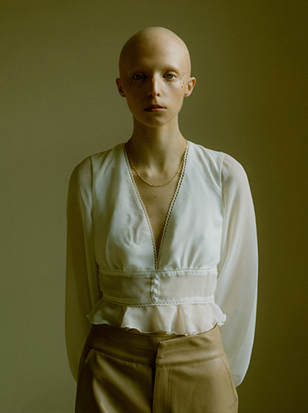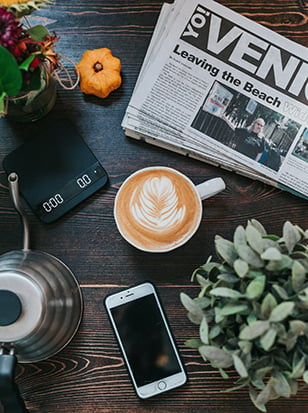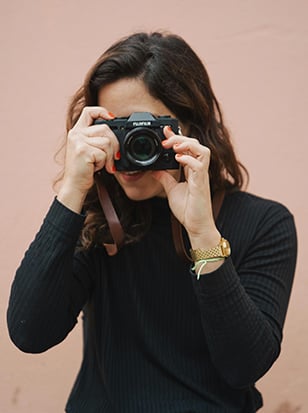
Holiday photography is one of the most fun forms of snapping there is. It’s something that practically everyone indulges in, even if they’ve no interest in photography. And so, for the committed photographer, it provides an extra challenge. How to make your images stand out from everyone else’s? Well, we’ve got ideas.
Consulting our team of photo experts, we’ve come up with a selection of tips to improve your holiday photography. This isn’t a gear guide — we’ve got the best cameras for travel photography to cover that — but is designed to get you thinking about holiday photography in a different way.
-
Get level horizons and straight lines in-camera
When you’re capturing scenes with straight lines, like buildings or horizons, any wonky framing is going to be noticeable. While this is correctable in software, you can save time by getting it right in-camera. Most modern cameras have a built-in levelling function, or a grid display that can be lined up with linear details.
-
Look for details, not just vistas
When taking holiday photographs, it can be tempting to try and fit as much into the frame as possible. But this is a fast way to get the same clichéd shot everyone else takes. Instead, zooming in on smaller details can convey the character of a location. Try photographing a cobbled street in a historic village, or the texture of some weathered window shutters.
-
Watch for blown-out highlights
Images taken in sunny conditions often show highlights that are flat, white and lacking in detail. This is particularly problematic in cameras with smaller sensors. You can compensate by dialling down the exposure, but this can result in the rest of the scene being overly dark.
Your camera may offer a dynamic range optimisation mode that works to preserve as much detail in highlights and shadows as possible. In Nikon cameras it’s “Active-D Lighting”, while on Sony gear, it’s called “D-Range Optimizer”. Check your camera’s manual to find it, and control those highlights.
-
Consider black and white
If you’re sick of capturing the same images as everybody else, why not try monochrome compositions? While of course you can convert any image to black and white, you’ll likely come out with better images if you’re thinking in monochrome during your composition.
Try shaking things up by setting your camera to a black and white mode like Fujifilm’s ACROS Film Simulation, and see what kinds of compositions jump out. Without the easy crutch of golden-hour light, you may find yourself picking out more interesting scenes.
-
Get permission before shooting
This isn’t just about politeness — if you ask someone for permission before snapping a picture, you start to build a rapport, and they may allow you to capture things you wouldn’t ordinarily be able to shoot. Take for example a market stall; without permission you may be able to simply get the kinds of images anyone else might, but if you ask, the owner may allow you to capture a different angle, or they may be happy to be included in the image themselves.
-
Scout views in advance
It won’t be hard to find the local vantage point where every tourist takes photos of the view. But you don’t want the same photo everyone else takes — so do some research to find a different spot. This might be a lesser-visited attraction, or even a bar or restaurant.
Not only will you end up with something different to the norm, but you may also be able to capture the tall building everyone else normally flocks to (e.g. Kuala Lumpur’s Petronas Towers, Prague’s Žižkov Television Tower, Berlin’s Fernsehturm, etc, etc).
-
Check the times of sunsets and sunrises
Online weather reports should give you these quite precisely. Try to get to a picturesque spot just before the sun sets for a spectacular shot – if it’s a public monument or building, it’s probably more feasible to do this just before a sunset rather than a sunrise.
-
Hit tourist destinations at the right time
When visiting the popular locations, try to avoid typically busy times like mid-morning. It may help to pay a quick visit beforehand and ask when there are likely to be the fewest people around; if you ask nicely, you may even be allowed to set up a tripod.
-
Seek out patterns and repetitions
Images that cleverly direct the viewer’s attention through the frame are particularly powerful, and patterns and repetitions are a great way to achieve this. Look out for arches, columns and other details that seem to disappear off into the distance.
-
Always be prepared for a shot
Don’t just get your camera out when you hit the Eiffel Tower — that is showing great disrespect to the streets of Paris! Photogenic scenes are always playing out, and it’s worth being ready to capture them. This doesn’t mean having your camera hanging from your fingers at all times, but rather making sure it’s always easily accessible, perhaps via a sling bag.
-
Pack your lens hood — and use it!
Lens hoods are invaluable in sunny situations. In harsh light, they help block extraneous light, which can cause the image to lose contrast and develop flare. It is true that flare can also be used creatively, particularly to emphasise sunnier weather – however, if you pack the hood, you’ll be able to choose whether to use flare or not.
-
Bring a polariser
Too many filters aren’t necessary — but a polariser can make a tangible difference to holiday photography. When used correctly they can deepen blue skies and make clouds pop, as well as remove reflections from glistening water or when shooting through windows.
-
Consider a mini tripod
Full-size tripods may not be practical for holiday photography, but a mini tripod can be the perfect way to capture long exposures at the sides of rivers or lakes — not to mention the good old 10-second timer group shot! Just make sure the tripod is rated to support the weight of your camera.
And there you have it - thirteen top tips to help you get the best shots while you're away. You don’t need to follow every single one, but keeping a few in mind can really make a difference. Take a moment to consider your surroundings and, before you know it, you’ll be tuned into your location and ready to capture some incredible photographs.

The Wex Blog
Sign up for our newsletter today!
- Subscribe for exclusive discounts and special offers
- Receive our monthly content roundups
- Get the latest news and know-how from our experts







